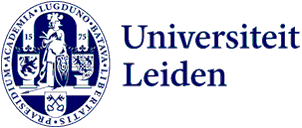
Looking at the person beyond the blood clot
How can we improve the treatment of thrombosis, reduce the disease’s impact and spend less money while we’re at it? This is what Erik Klok, Professor of Internal Medicine and an internist, is researching. He will discuss it in depth in his inaugural lecture on 10 March.
The percentage of elderly people is increasing and we are living longer. Demand for care and healthcare costs are consequently rising. ‘We need to do much more with much less,’ is how Erik Klok will summarise the situation in his inaugural lecture. ‘We can’t carry on in the same vein,’ he says, because otherwise one in four Dutch people would have to work in healthcare by 2050 and 20 per cent of our earnings would go on healthcare. Klok is specialised in venous thrombosis and wants to future-proof the care for people with this clotting disease. That is to say, saving costs while also providing better care.
What is venous thrombosis?
‘A blood clot in a vein, usually in your legs, that can cause symptoms. Your leg can become swollen, red and painful. If the clot breaks loose, it goes to your lungs and you develop a pulmonary embolism.’
In your inaugural lecture you describe the fascinating world of blood clotting.
‘The blood clotting system is such a fantastic system. It’s all so finely tuned. If you remove one domino, the whole system collapses and you end up with a thrombosis or a bleed.’
How does thrombosis occur?
‘If your blood flow reduces, your blood composition changes or a blood vessel wall is damaged. This can happen if you lie in bed for a long time when you’re ill or because of a long flight, an accident or an operation. Or from drugs like the pill, or from pregnancy, obesity and various diseases. But most of us will never suffer from it. It occurs in one to two people per thousand per year.’
But you can do something about it, can’t you?
‘We can use anticoagulation tables to stop the blood from making new clots. If these clots are life-threatening, we can soon remove them with drugs or catheters. There are drawbacks to these drugs and techniques though: they have nasty side effects and the costs are high.’
The Integral Healthcare Agreement between the Ministry of Health, Welfare and Sport and healthcare providers states that care that has not been proven to be effective should no longer be provided.
‘I completely agree with this in the case of thrombosis, for instance with regard to expensive interventions. The new techniques are fantastic but they cost thousands of euros and it has not yet been proven that patients benefit from them. That’s what we are researching. We’ve got such superb CT scans that we can see tiny pulmonary embolisms. The only thing is that we don’t know whether we should treat them. That’s another thing we’re researching.’
Better care for less money. Is that possible?
‘Yes, by making smarter choices and tailoring treatment and guidance to the individual patient. So prescribing the right drugs in the right dose and for the right duration, for example. But also by gaining a much better idea of how people are doing after treatment.
‘If you’re told you have thrombosis or a pulmonary embolism, this has a huge impact. Feelings like low mood and anxiety are common. If we measure this, for example with a questionnaire, it makes it easier to tailor the care to the patient. I want to make the transition from the blood clot to the person who has that blood clot. What are that person’s values, interests and needs? If we can find that out, we’ll be able to find the best treatment and reduce the disease burden.’
Text: Thessa Lageman
Photo: Steve Buissinne / Pixabay.com
